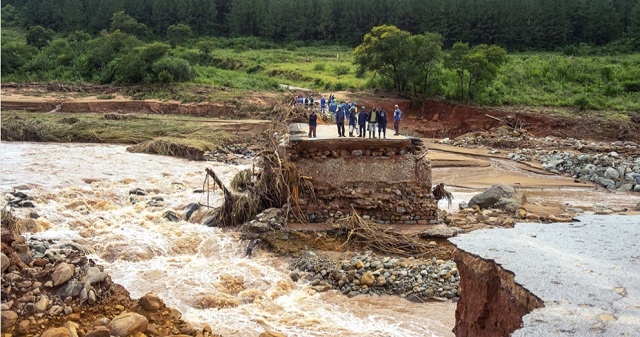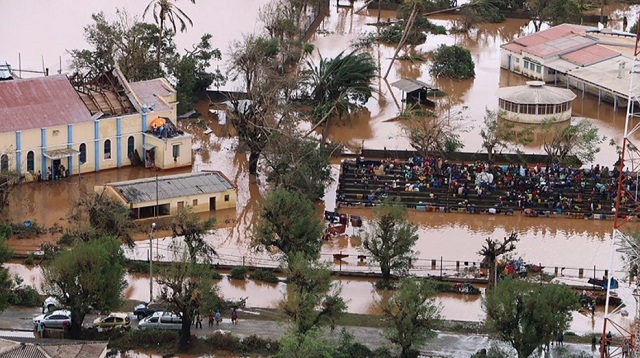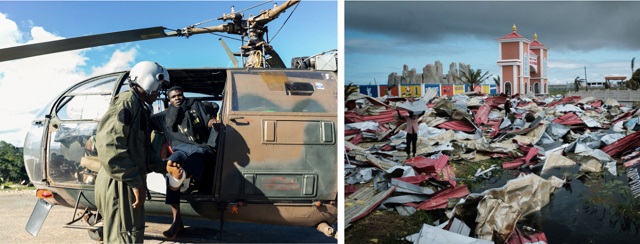
Hundreds killed and over 800 square miles covered in water
| The Independent | Tropical Cyclone Idai struck the Sofala ‘province of Mozambique in the waning hours of March 14, causing damage and flooding that could make it one of the worst weather disasters to ever hit the Southern Hemisphere.
Idai left Sofala with what resembled an inland ocean stretching more than 30 miles wide and potentially about 20 feet deep. The tropical storm destroyed 90 percent of Beira, a port city of more than a half-million people. The confirmed death toll as of March 21 was 557 in Mozambique and neighboring Zimbabwe and Malawi, but with thousands still missing or at risk Mozambique’s president Filipe Nyusi said the death toll could reach 1,000.
The Sofala province is historically prone to flooding, and floods occur every two to three years in Mozambique, according to the Global Facility for Disaster Reduction and Recovery. It also reports that Mozambique ranks third among African countries for exposure to weather-related hazards.
But the “inland oceans” created by Idai surpass those created by any previous storm. A total of 836 square miles were covered in water as of March 20, according to the United Nations Institute for Training And Research (UNITAR). If the entire country of Bahrain were covered in water, it would only be roughly a third the size of the area flooded in Sofala.
Land and Environment Minister Celso Correia said on March 24 that over 700 people were across Mozambique, Zimbabwe and Malawi; 417 of them in Mozambique. The number of dead was expected to rise as many people remained unaccounted for. The officials will only be able to determine the final casualty figure once the flood waters have receded.
Meanwhile thousands remain trapped by the floodwaters, and many of the Mozambican government’s relief centres have only just started receiving food supplies.
Some 1.7 million people are said to be affected across southern Africa, with no electricity or running water in areas where homes have been swept away and roads destroyed by the floods, according to the BBC. The International Federation of Red Cross and Red Crescent Societies (IFRC) were warning of the risk of other outbreaks, already noting an increase in malaria.
“We are living an unprecedented natural disaster. A disaster that only matches major disasters,” Correia said. “Unfortunately, no-one in the region and in the world could predict a disaster of this size.”


****
 The Independent Uganda: You get the Truth we Pay the Price
The Independent Uganda: You get the Truth we Pay the Price


